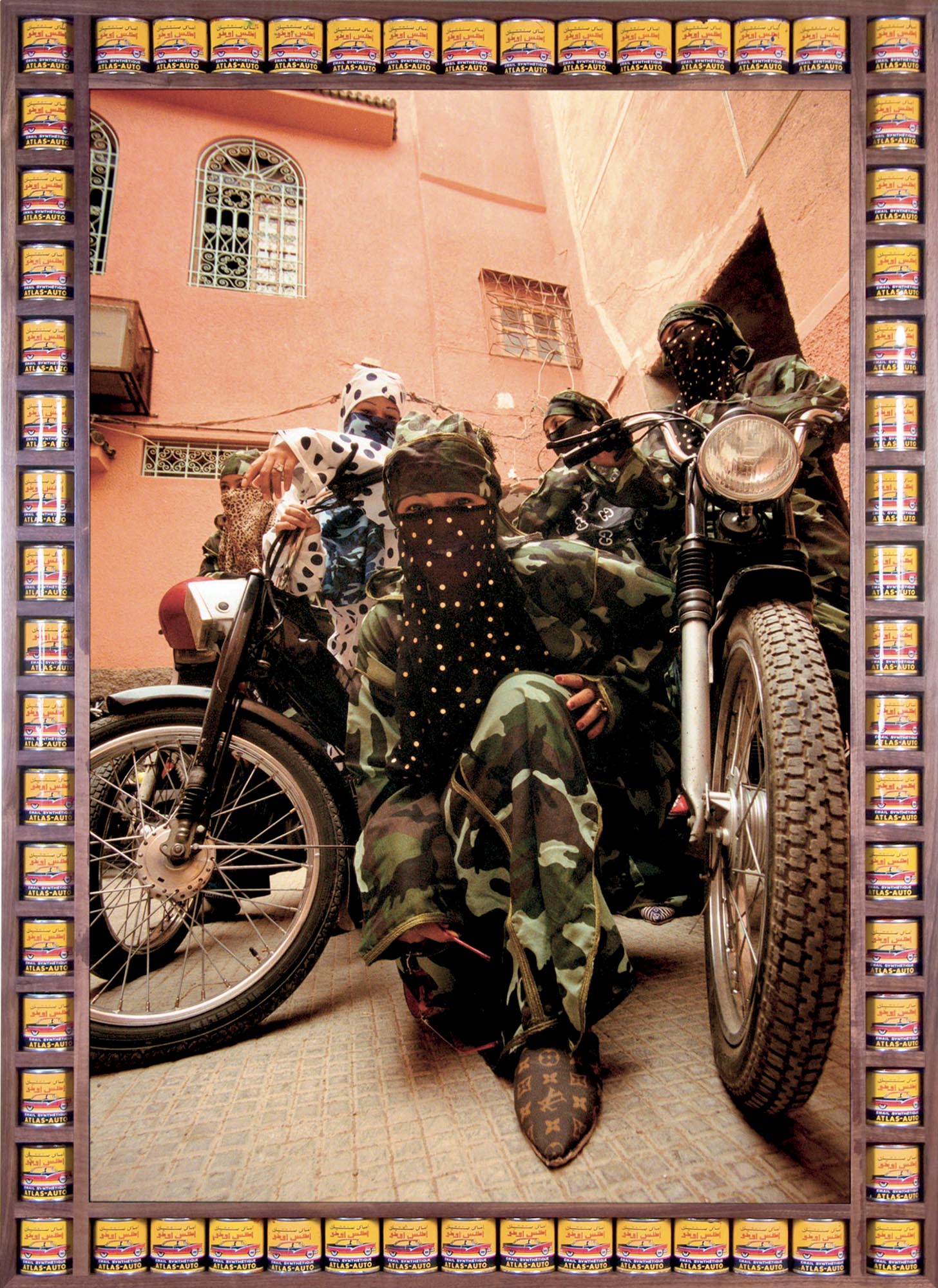

Hassan Hajjaj (1961, Larache, Morocco; lives in Marrakech and London) works with photography, fashion, music, cinema, and design. His art is a form of celebration of the popular visual culture of the souk – a social space and a symbol of interaction and exchange.
Hajjaj assembles and opposes eastern and western elements to create a ‘universal universe’, celebrating our commonalities as human beings but also our differences, which are our wealth.
What was your artistic path? And, are you satisfied with it?
I was born in Morocco and I grew up there until the age of thirteen. When I moved to London I had to start in a new place, with new people and a new language. I went to school until the age of fifteen and, thereafter, I have been unemployed for about six years. During this period, I started organizing underground parties and, in 1994, I opened up a small boutique. In this shop I’ve learned a lot about art, fashion and music, I met with photographers, video-makers, chefs and musicians. So this is my learning process. In the mid 80s I started taking pictures just because I really loved it, not to become an artist. I’ve always been creative in many different ways. In organizing parties, for example, I would choose an empty space that I decorated to make people feel good. I learned producing and promoting. Photography is something that came later, it was a long journey. I also met a very important person in my career, an art curator who really introduced my work to the art world.
I’m very satisfied because I have no expectations. Even when I started “being an artist”, I never thought that it was something that could really happen to me: amazing people, an incredible journey indeed! Everything changes and you have to change with it: I can’t see what I will be doing in the future but as long as I feel happy I’ll keep doing it it, when that change arrives I will decide what to do. I did many things, documentaries, filming, I designed t-shirts, I’m always doing something, so I have many things to change if I’m not enjoying it. I think sometimes if you are an artist doing only one thing you may get bored after a while, for example if you’re a painter and you’re just painting you might get a blockage. In 15 years’ time we have to change especially with social media and technologies, everything is going very fast, faster than it was ever before.

In your pieces of art pop culture and the African heritage of patterns intermingle. What is the story behind the strong presence of tradition that you bring with your art?
I’m Moroccan, so I’m North African and I’ve been living in London, so it’s also my home and it exposed me to many worldly stuff, many different types of people. When I do my work I do it with the environment I’m in which is North African, African, Caribbean, London, English, travelling and this really comes up in my work. It’s not something that I think of, doing African art or other art. My work is part of my journey, when I look at my pictures I know I was there and the same is for the person that I’m taking the picture of. It’s documenting.
You are a photographer, interior designer, fashion designer and you’re now experimenting with music. What is your take on contemporary art?
I see it changing, and contemporary art is like the sea when you’re in the sea: it differs depending on which sea you’re on, Mediterranean Caribbean, Atlantic. Contemporary art has become so popular, with very good art and very bad art, which is inevitable when something becomes popular. Also I think contemporary art has changed because an artist can be a musician, a painter filming and it’s accepted while before you really had to be one thing, and you weren’t accepted for being in another area. Virgil Abloh, god bless him, worked with Louis Vuitton. He did artistic stuff with a fashion brand and then he did music with it: it’s a circle.
What kind of humanity do you want to represent through your portraits?
I think, I don’t want to be the hero, but I’m really trying to get the spirit of the person in the picture, because I’m taking pictures mainly of people. The idea is to really have them speak to the public, I’m just someone that is taking the picture and if they can talk humanity, whatever it is: politics, religion, being called fashionable and stuff like that, then it’s fine because the deal is that it has to come from the person in the picture. I’m also trying to capture the time we’re living in.
Gang of Marrakech, 2000, is an example of that. A journey in a picture: what they’re wearing is a camouflage fabric and I bought that in New York, the polkadot fabric I bought it in London and I had them made in Marrakesh. When I look at that I see a process to get to that point. The frame is the last thing, I always add it later. First I work on the image and then it’s about working out the frame, which has to go with the person in the picture.